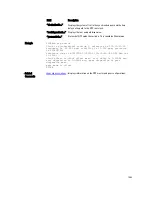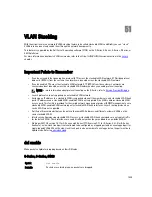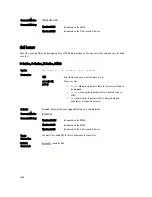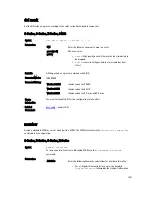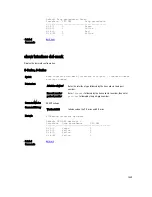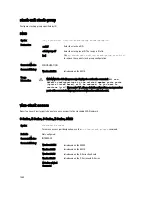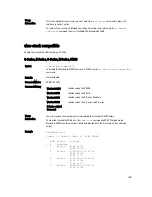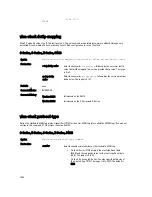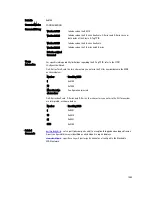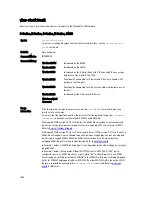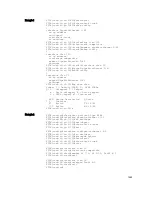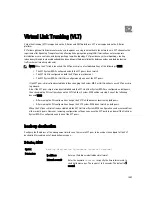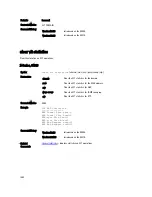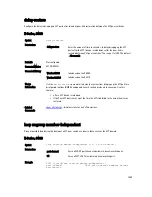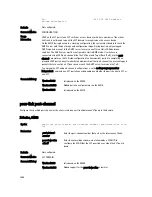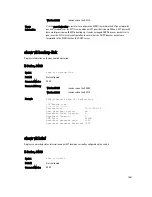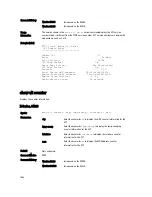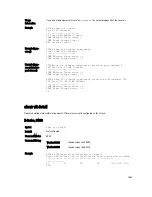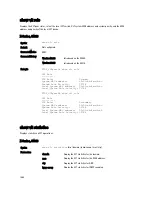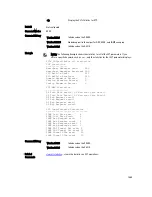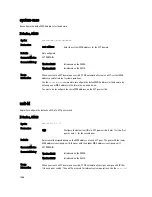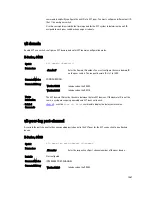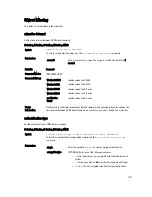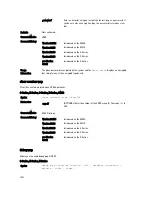
52
Virtual Link Trunking (VLT)
Virtual link trunking (VLT) is supported on the Z-Series and S4810 platforms. VLT is not supported on the E-Series
platform.
VLT allows physical links between two chassis to appear as a single virtual link to the network core. VLT eliminates the
requirement for Spanning Tree protocols by allowing link aggregation group (LAG) terminations on two separate
distribution or core switches, and by supporting a loop-free topology. VLT provides Layer 2 multipathing, creating
redundancy through increased bandwidth and enabling multiple parallel paths between nodes and load-balancing
traffic where alternative paths exist.
NOTE: When the VTL link is launched, the VLT peer-ship is not established if any of the following is TRUE:
•
The VLT System-MAC configured on both the VLT peers do not match.
•
The VLT Unit-Id configured on both the VLT peers are identical.
•
The VLT System-MAC or Unit-Id is configured only on one of the VLT peers.
If the VLT peer-ship is already established, then changing the System-MAC or Unit-Id will not cause VLT peer-ship
to go down.
Also, if the VLT peer-ship is already established and the VLT Unit-Id or System-MAC are configured on both peers,
then changing the CLI configurations on the VLT Unit-Id or System-MAC will be rejected if any of the following
become TRUE:
•
After making the CLI configuration change, the VLT Unit-Id becomes identical on both peers.
•
After making the CLI configuration change, the VLT System-MAC do not match on both peers.
When the VLT peer-ship is already established, the VLT Unit-Id or System-MAC configuration can be removed from
either or both peers. However, removing configuration settings can cause the VLT ports to go down if the Unit-Id or
System-MAC is configured on only one of the VLT peers.
back-up destination
Configure the IP address of the management interface on the remote VLT peer to be used as the endpoint of the VLT
backup link for sending out-of-band hello messages.
Z-Series, S4810
Syntax
back-up destination
ip-address
[interval
seconds
]
Parameters
ip-address
Enter an IP address in dotted decimal format.
interval
seconds
Enter the keyword
interval
to specify the time interval used to
send hello messages. The range is 1 to 5 seconds. The default is 1
second.
1457
Summary of Contents for Force10 Z9000
Page 1: ...FTOS Command Line Reference Guide for the Z9000 System FTOS 9 1 0 0 ...
Page 96: ...96 ...
Page 194: ...194 ...
Page 312: ...312 ...
Page 540: ...540 ...
Page 546: ...546 ...
Page 560: ...560 ...
Page 566: ...566 ...
Page 590: ...action act UpdateCounter param0 1 0x01 param1 0 0x00 output truncated 590 ...
Page 624: ...624 ...
Page 638: ...638 ...
Page 648: ...648 ...
Page 659: ...Related Commands show gvrp displays the GVRP configuration 659 ...
Page 660: ...660 ...
Page 834: ...834 ...
Page 854: ...854 ...
Page 906: ...906 ...
Page 914: ...914 ...
Page 976: ...976 ...
Page 990: ...990 ...
Page 1006: ...1006 ...
Page 1008: ...1008 ...
Page 1026: ...1026 ...
Page 1145: ...10 211 1 2 Outgoing interface list GigabitEthernet 8 0 1145 ...
Page 1146: ...1146 ...
Page 1156: ...1156 ...
Page 1166: ...1166 ...
Page 1180: ...1180 ...
Page 1258: ...1258 ...
Page 1272: ...1272 ...
Page 1394: ...1394 ...
Page 1400: ...1400 ...
Page 1410: ...1410 ...
Page 1424: ...1424 ...
Page 1444: ...1444 ...
Page 1468: ...Version 8 3 8 0 Introduced on the S4810 1468 ...
Page 1470: ...1470 ...

